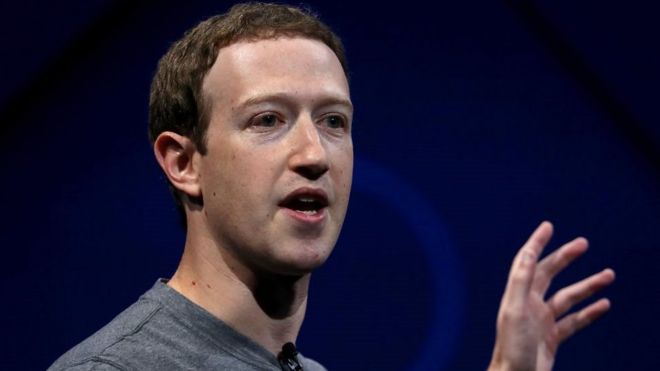Step into the
Haskell Library and you’d easily mistake it for a typical small-town American library. Sure, it’s a bit more elegant, with original woodwork from 1905 and upholstered reading chairs but, still, a library like any other.
The library straddles two nations, with one foot in the US and the other in Canada
Soon, though, questions nag. Why do the librarians toggle effortlessly between English and French? Why do the stacks contain so many books on French-Canadian history? And, most perplexing of all, what is that black line traversing the floor?
The Haskell, it turns out, is a library like no other. It straddles two nations, with one foot in the US and the other in Canada. That black line running along the floor – a strip of masking tape – marks the international border, separating the towns Derby Line, Vermont, from Stanstead, Quebec. The front door, community bulletin board and children’s books are in the US; the remainder of the collection and the reading room is in Canada.
The tape looks worn. No wonder – it’s the source of endless attention. Not an hour goes by, according to Nancy Rumery, the library’s director, when visitors don’t pose for photos with the line. They pose while making faces, or while lying across the tape. They pose with Flat Stanley, a paper cut-out of the children’s book character. Some families queue on either side of the line, others in descending height order.
Lately, Rumery has noticed something even odder: some visitors freeze before the black line, as if it were emitting an invisible force field. They’ve seen an internet rumour claiming it’s illegal to cross the line. In fact, it is encouraged. The library relishes its role as a sort of free-trade zone for humans, a reprieve from a border that, while not exactly the Korean DMZ, is no longer the loosey-goosey frontier of decades past. Why such a fascination, though, with an innocuous strip of black masking tape?
A border runs through the middle, yet it brings people together
Borders fascinate us, always have. There is something about the divide between two worlds that intrigues – and frightens. Let’s face it, borders can be scary. They hint at darkness and danger out there, on the other side. That is what makes the Haskell Library so refreshing. It refuses to cave to this fear.
“A line on a map is supposed to separate us, supposed to be what divides us,” said Canadian Hal Newman. “But that is what makes the Haskell so spectacular. Yes, a border runs through the middle, yet it brings people together. How fantastic is that?”
Newman is the former director of the adjoining Haskell Opera House, which also straddles the border. He calls it ‘the impossible room’, as in impossible that such a venue exists. The stage is in Canada, most of the seats in the US. The border, in fact, slices through some of those seats, making the Haskell “the only opera house in the world where you can have one cheek on both sides of the border,” he said.
This is by design, not accident. The Haskell family purposefully built the library and opera house along the border more than a century ago to promote cross-border interaction and friendship.
Managing a bi-national enterprise “is absolutely complex,” said Rumery, who, while Canadian, uses ‘we’ when referring to Canadians or Americans. There are international exchange rates to contend with (the library accepts both currencies; there are no fines, but they sell postcards and other mementos); and two sets of safety regulations (the library uses whichever is strictest). Going out to lunch requires crossing an international border (it’s easier to order in). Rumery must negotiate not only with readers hunting for the latest Stephen King novel but also with the Royal Canadian Mounted Police, US Homeland Security, and the International Boundary Commission, among others.
Then there was the time 15 years ago when the library wanted to install a new lift. The lift was in Canada, but bringing the crane, which was in the US, to that side – even for a few hours – meant paying hefty duties. The solution? Leave the crane on US soil and hoist the lift through Canadian airspace.
“Sometimes I wish I worked for a plain old cinder block library,” Rumery said, but the mischievous twinkle in her eyes gave her away. She was only kidding. She wouldn’t want to work anywhere else.
The library is more than a geographic curiosity; it is, in this age of geopolitical tension and talk of walls, a reminder that borders are fictions created by humans that are precisely as real, and as menacing, as we choose to make them.
I’ve been visiting this stretch of borderland for years. The cottage I rent with Canadian friends represents something of a compromise; located in Vermont, but so close to Canada you can walk there – which is exactly what I did this summer. I also drove and cycled across the border, each time dutifully clearing US and Canadian customs and immigration.
One sunny morning, though, I decided to do something different. I hopped into a kayak and paddled across the border, the boundary marked only by a small white obelisk perched on a tiny island in the middle of Lake Memphremagog. It was wrong, I knew, but also exhilarating. There is something deliciously delinquent about crossing an international border surreptitiously, even one as seemingly benign as the US-Canadian border. I had thrown shade on the Treaty of Westphalia, the 17th-Century accord that created the concept of modern nation-states that prevails to this day.
Borders are not static places. They change with the mood on one, or both, sides of the line. The big change to this sleepy border crossing came after the attacks of 11 September 2001. Streets that traversed the border were closed to traffic. Large potted plants were installed in front of the library, a barrier that would have been unthinkable on 10 September. Today, a US Homeland Security vehicle sits outside the library’s entrance 24 hours a day.
Back in the day you wouldn’t think twice about crossing the border to get a slice of pizza
The biggest change, though, is the steady flow of asylum seekers – ‘northbounders’, as they’re known – from the US to Canada. “I remember one day I saw a van driving up a street on the US side and this family gets out and they run across the border,” Newman recalled. “It’s minus 20C outside and the kids are wearing flip-flops. I’ll never forget that.” People separated by the border arrange to meet at the library, embracing among the copies of Philip Roth and Robertson Davies.
Among long-time residents here a strain of border nostalgia persists. Back in the day you could cross the border effortlessly. Back in the day, the customs agents knew your name and waved you through with a smile. Back in the day you wouldn’t think twice about crossing the border to get a slice of pizza. Back in the day – it isn’t said but understood – life was better.
“I used to have as many Canadian friends as American friends,” said Buzzy Roy, the pharmacist at Brown’s Drug Store in Derby Line. “You didn’t think of them as Canadians or Americans. They were just friends. In our minds, the border didn’t exist.” Today, the two towns still share a water system but, aside from fond memories, not much else. The library and the adjoining opera house are the last places where residents regularly interact.
You didn’t think of them as Canadians or Americans – they were just friends
Roy’s pharmacy occupies a precarious position, a sort of No Man’s Land between the US and Canada. Cars entering from Canada must drive about 100m before reaching the US customs and immigration post, which means that, while on US soil, they have yet to officially enter the country. The pharmacy stands in this gap. “It’s very confusing, very abnormal. You don’t see many borders like this,” he said, adding that occasionally people walk into his store not knowing which country they’re in.
Derby Line, like many small towns, is hurting economically, as the boarded-up storefronts attest. Competition from big box stores is partly to blame, but so is the border, according to Roy. “Too much hassle for too little reward,” he said. Sometimes borders fuel the local economy, other times they starve it. Never are they neutral.
“I can see the need for tightening the reins from 30 or 40 years ago, but some of the things they do are unnecessary,” said Brian Smith, a Vermont state representative who has lived virtually his entire life in Derby Line. Smith relayed a story about an 85-year-old Vermont man who drove to visit his Canadian girlfriend. When he returned, the US Homeland Security computers were down, so the agent – who knew the man – insisted he wait for an hour until they came back on line. “That’s ridiculous,” Smith said. “Canada is not our enemy.”
True, but in recent years some have tried to exploit the border’s relative porousness. In 2011, a Montreal man was arrested for allegedly smuggling a rucksack filled with guns through the library’s restroom. (He was recently
extradited to the US to face charges there.) It was a shock to the library staff; “a violation of sacred space,” Newman said.
It also raised fears that, in the current climate, the library’s future is uncertain. Shuttering the library, though, wouldn’t happen without a fight, predicted Smith.
“You would see citizen outrage,” he said. “On both sides of the border.”







